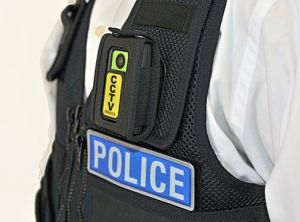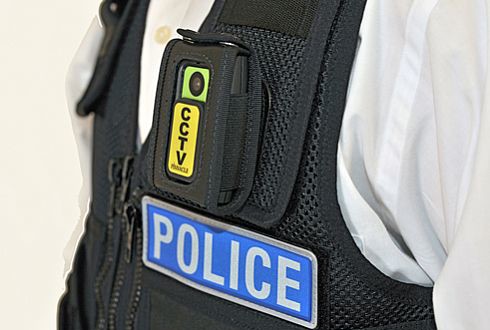Testimony on two bills requiring the use of body-cams by Nevada police departments showed how much of the devil is going to be in the details.
One bill, AB162, comes from Assemblyman Harvey Munford. The other, SB111, from Sen. Aaron Ford would apply only to Clark and Washoe counties, but could be amended to cover the rest of the counties.
 Both bills are worthy, and they attracted wide support.
Both bills are worthy, and they attracted wide support.
Munford mentioned Ferguson, Madison and Selma in his remarks on Monday, noting that as the only black at his college, where he was a star basketball player, “I endured quite a bit.”
Ford offered two videos from police body-cams during his presentation — one apparently vindicating an officer who shot an unarmed man, the other showing the video that helped lead to charges against officers in Albuquerqe.
There’s no doubt body cameras would be an aid to both the public and police in depicting the truth of what happens in such encounters.
Chuck Calloway, representing the Las Vegas Metro Police Department, said there’s “really no downside” as far as the potential to shed light on the incidents. And Vanessa Spinozola, lobbyist for the ACLU, called body cams another eye on the scene.
But much of the testimony, like my brief statement, was on exactly how and when they would be used, who would have access to the videos and several other issues that aren’t nailed down by the bills as they were introduced.
(There is, of course, the cost. That’s what ultimately may doom both bills.)
The Press Association’s questions involve the videos as public records. There are issues distinct to body-cams, because police wearing them may enter private homes, talk to victims and witnesses who may be juveniles or uninvolved in the actual incident, and additional concerns about privacy and confidentiality.
In Calloway’s testimony, he suggested disallowing “blanket requests” for camera footage, suggesting instead they be available only for a specific event. I think that’s a workable solution.
But he also recommended that a video with “sensitive or confidential” contents be available only for viewing — not copying. That’s to keep lurid stuff of YouTube. While the intentions may be good, a vague policy could allow police to release only what makes them look good. Who would decide what’s confidential or, even more difficult, sensitive.
Every newspaper photographer has been at the scene of an accident or homicide where well-meaning police officers (or firefighters, or EMTs) have tried to shield grisly details from the camera lens. The problem with that is, it’s not up to the police what we shoot. It’s up to us to decide what we publish.
And although Metro has a detailed policy in place for when it releases videos now (200 Las Vegas officers already are wearing cameras in a pilot project), there are two flaws in it. One misinterprets a state statute on confidentiality.
The other says Metro can withhold video for “any other privacy concerns.” Not true, at least under Nevada’s public records law.
I hope one of the bills goes forward. But a lot of the issue have to be brought into much sharper focus before they actually become law.
 Nevada Press Association The best in Nevada journalism since 1924
Nevada Press Association The best in Nevada journalism since 1924

Reblogged this on Nevada State Personnel Watch.